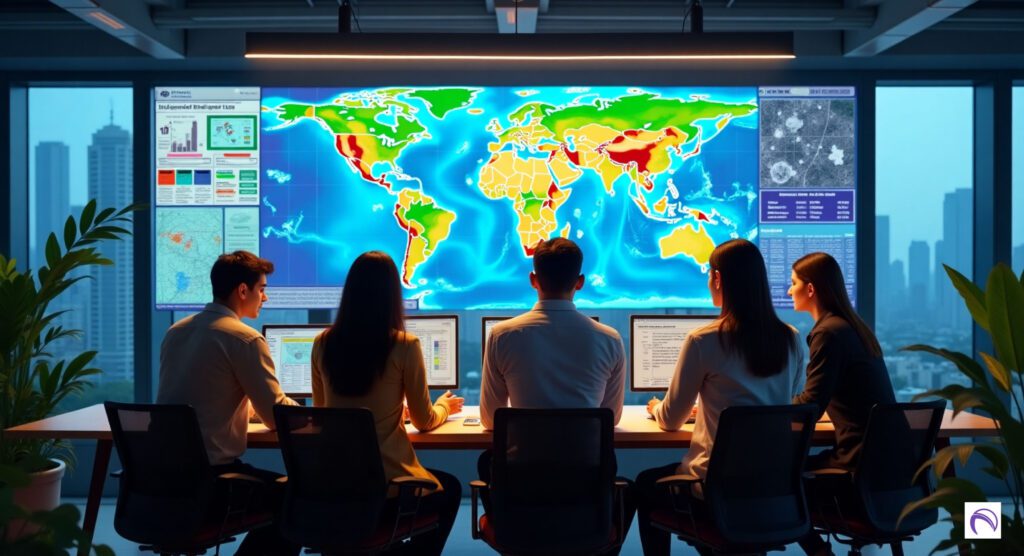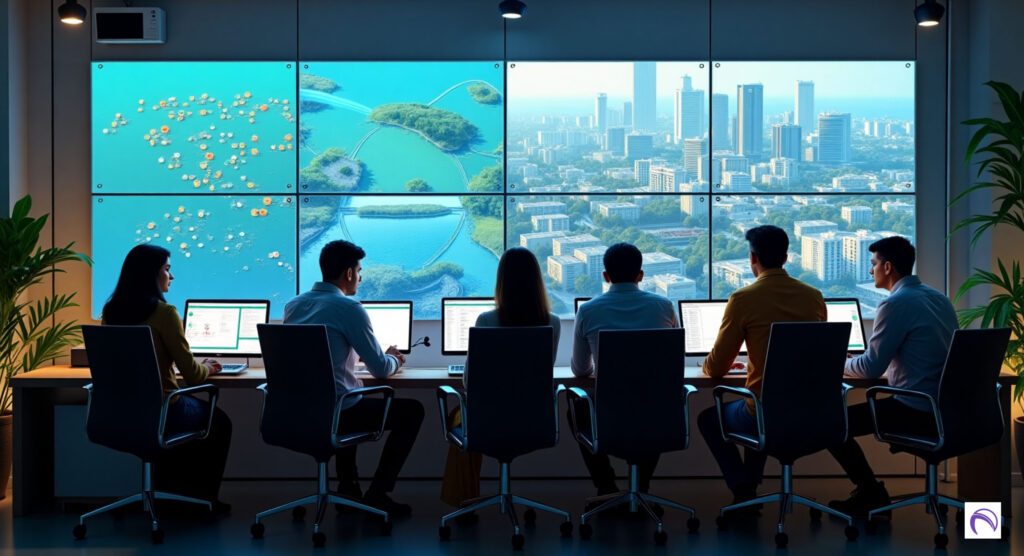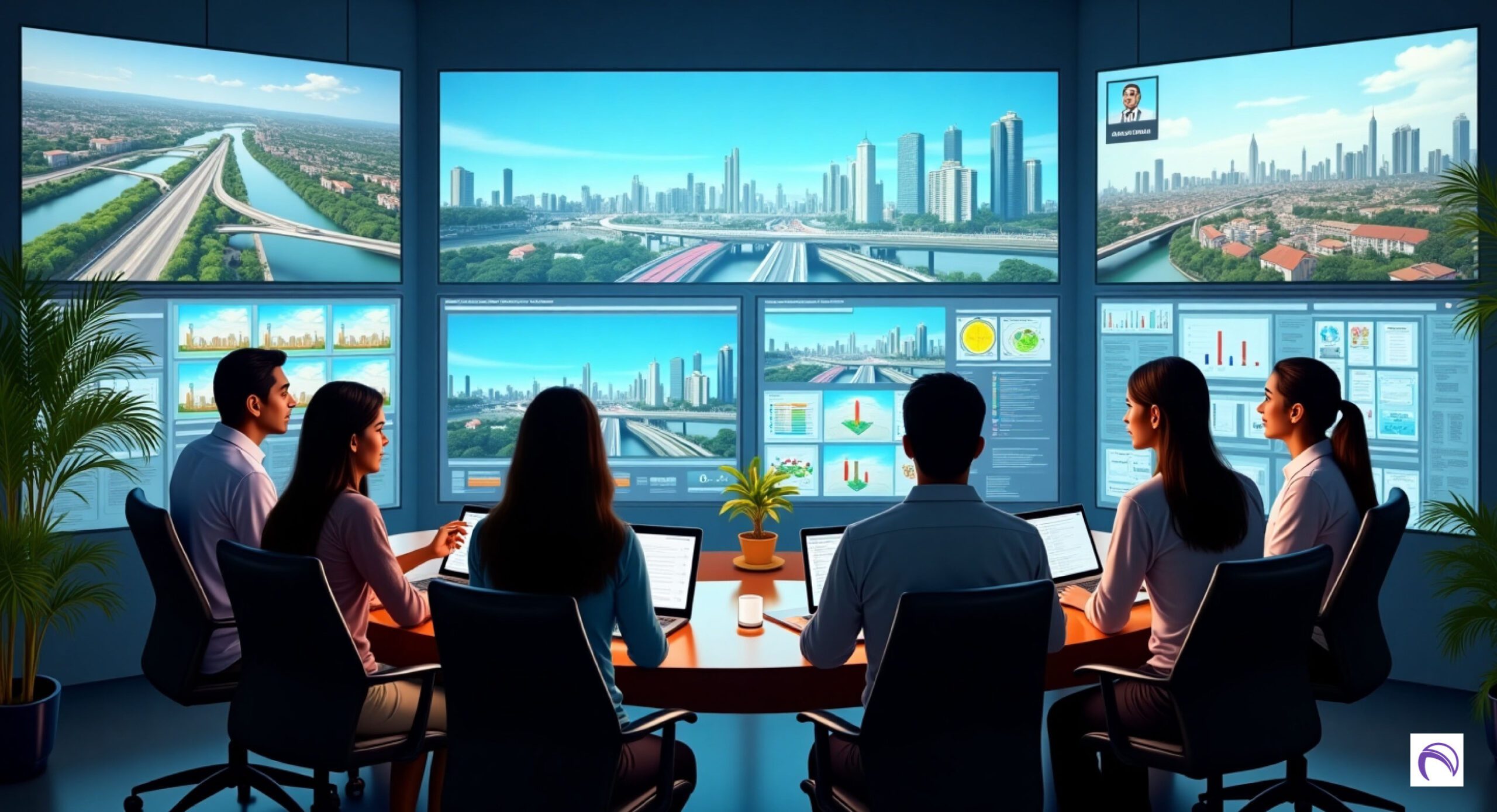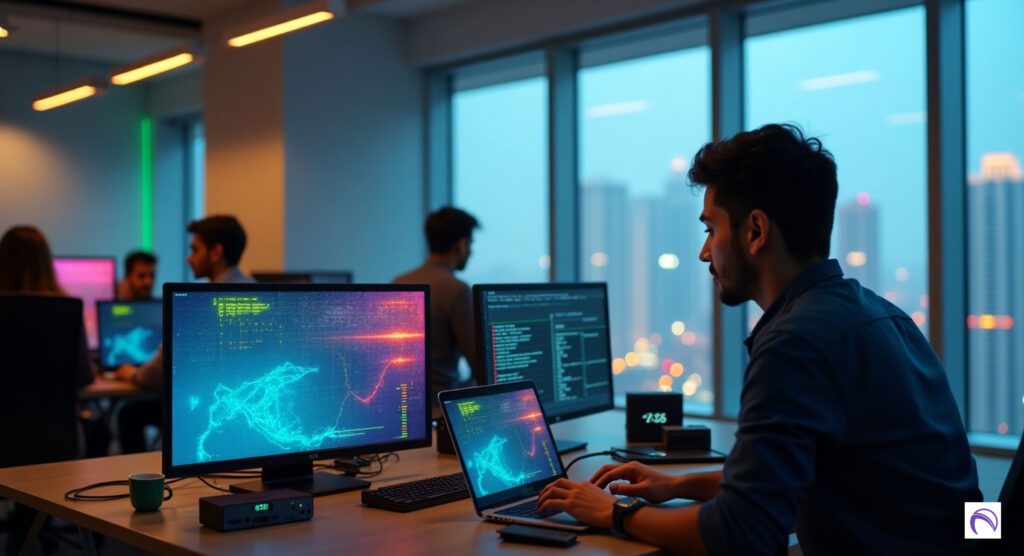In 2025, digital twin technology is transforming India’s $150 billion smart city and urban planning market, creating virtual replicas of urban systems to optimize infrastructure and enhance livability. With 60.4% of India’s 1.4 billion population digitally connected and 63 million MSMEs driving technology adoption, digital twins resonate with 70% of urban planners prioritizing efficient, sustainable cities. Supporting India’s 100+ smart cities and a $1 trillion digital economy, this technology aligns with a 15% CAGR in smart city solutions and 40% renewable energy goals through data-driven urban management.
Why Digital Twin Technology Matters for Smart Cities in 2025

Digital twins—virtual models of physical urban assets—enable real-time monitoring and predictive analytics, reducing operational costs by 20% and improving urban efficiency by 25%. With 500 million social media users discussing smart city trends and 50% of UPI transactions funding urban tech, digital twins power India’s 100+ smart cities, from Mumbai’s bustling streets to Bengaluru’s tech hubs. Costing ₹1 crore to ₹100 crore for city-scale deployment, they serve 60.4% of digital urbanites, addressing challenges like traffic congestion and resource waste. By simulating urban systems, digital twins help India build sustainable, resilient cities in a rapidly urbanizing world.
As an urban technology expert, I’ve worked on smart city projects integrating digital twins across India. This guide explores seven key innovations in digital twin technology for smart cities in 2025, offering insights to shape smarter urban ecosystems.
Digital Twin Technology Innovations
1. Real-Time Traffic Simulation
Digital twins model traffic flows using IoT sensors, reducing congestion by 20% in cities like Delhi. In 2025, 60% of smart cities adopt this for dynamic signal optimization. siemens.com
2. Infrastructure Monitoring
Digital twins monitor bridges, roads, and utilities, predicting maintenance needs with 90% accuracy. In Bengaluru, 40% of infrastructure projects use twins to cut repair costs by 15%. bentley.com
3. Energy Optimization
Digital twins optimize smart grids, reducing energy losses by 15%. In Hyderabad, 50% of grids leverage twins for efficient distribution, supporting 40% renewable energy goals. schneider-electric.com
4. Flood Risk Prediction

Digital twins simulate flood scenarios with 85% accuracy, saving 20% in disaster recovery costs. Mumbai’s monsoon preparedness relies on twins for real-time alerts. arcgis.com
5. Urban Planning Optimization
Digital twins analyze land use and population density, improving planning accuracy by 25%. In Chennai, 30% of urban projects use twins for sustainable development. esri.com
6. Public Safety Enhancement
Digital twins integrate crime and traffic data, improving police response times by 20%. In Ahmedabad, 50% of surveillance systems use twins for proactive safety. hikvision.com
7. Waste Management Efficiency
Digital twins optimize waste collection routes, cutting fuel use by 15%. In Pune, 40% of municipal systems adopt twins for smarter waste management. sensoneo.com
Digital Twin Technology Innovations Table 2025
| Innovation | Cost (₹) | Key Benefits | Impact in India |
|---|---|---|---|
| Real-Time Traffic Simulation | 1 crore–50 crore | Reduces congestion by 20% | 60% smart cities adopt (Delhi) |
| Infrastructure Monitoring | 2 crore–80 crore | Cuts repair costs by 15% | 40% projects use (Bengaluru) |
| Energy Optimization | 5 crore–60 crore | Reduces energy losses by 15% | 50% grids adopt (Hyderabad) |
| Flood Risk Prediction | 1 crore–30 crore | Saves 20% in recovery costs | Enhances Mumbai monsoon plans |
| Urban Planning Optimization | 2 crore–100 crore | Improves planning accuracy by 25% | 30% projects adopt (Chennai) |
| Public Safety Enhancement | 2 crore–25 crore | Improves response times by 20% | 50% surveillance use (Ahmedabad) |
| Waste Management Efficiency | 50 lakh–15 crore | Cuts fuel use by 15% | 40% municipal adoption (Pune) |
Applications of Digital Twin Technology
- Efficiency: Saves 15–25% in urban resource use for 60.4% digital urbanites.
- Sustainability: Supports 3,500 IGBC-certified green projects with optimized planning.
- Smart Cities: Enhances infrastructure in 100+ smart cities, boosting connectivity.
- MSMEs: Empowers 63 million businesses with cost-effective urban tech.
- Content Creation: Fuels smart city discussions for 500 million social media users.
Benefits of Digital Twin Technology
- Cost Savings: Reduces infrastructure and operational costs by 15–20%.
- Sustainability: Aligns with 40% renewable energy goals via efficient systems.
- Scalability: Suits small towns to megacities, adopted by 60% of smart cities.
- Resilience: Improves urban preparedness for 60.4% digital residents.






1 thought on “Digital Twin Technology for Smart Cities in India 2025: Building Smarter Urban Futures”